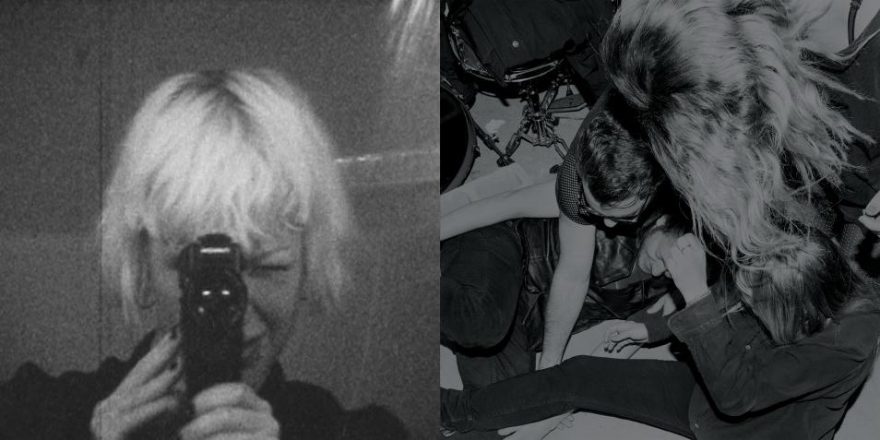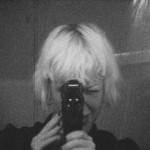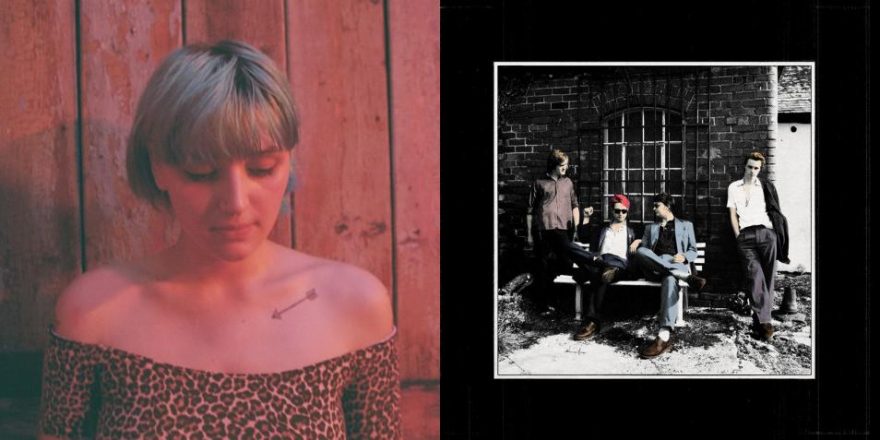The first time I heard this album, I was walking in the rainy streets of Manchester. When I sat down to write a week later, I was in a tiny, stifling flat during a New York summer. Truth be told, I wasn’t too familiar with No Joy before taking this assignment. I’ve heard of them, and I’m sure we’ve been on a few of the same festival lineups, I’ve just never got around to “checking them out.” This piece seems to be the perfect chance to do just that.
But first, a little research. I do a quick scan through Google, and almost every page tells me Bethany Cosentino of Best Coast has described them as “the best band ever.” There are a lot of bands in this world, and I sure as shit don’t want to miss out on the best one, ever. I also find out that No Joy is fronted by the duo of guitarist-singer Jasamine White-Gluz and guitarist Laura Lloyd, plus drummer Garland Hastings and bassist Michael Farsky. I don’t know if it comes from the lack of female musicians available to me in my youth or the idea of someone who can better understand my experience now, but I’ve always got my ears open for other female artists. The band formed in 2009, and after a brief spell living in different places, they are now based in Montreal. More Faithful is their third album. I can’t help but feel tardy to the party.
As each track on More Faithful passes, I want to hear the next. When I’ve heard them all, I listen through all their other albums. I read interviews and watch videos; I’m into them, and I want to know more. I find plenty of shared experiences with them: trying to record (or do pretty much anything) in your practice room with a heavy metal band playing at the same time next door; spending ages recording something, then realising a few weeks later you never want to hear it again; trying to make your own visuals that look elaborate, and recording yourself throwing a pita bread at the wall just to see what it sounds like.
More Faithful crashes straight in with “Remember Nothing.” It’s heavy, dark and rhythmic. The hypnotic vocals are kept low in the mix throughout, used more as another instrument to focus the melody. The instruments and vocals are indistinguishable to some extent, and I like that. I’ve read that the band enjoy reading people’s attempts at deciphering their lyrics. I usually hear what I want to hear even in songs where the vocals are perfectly audible, so I’m sure I’ll be getting a few wrong, but I think White-Gluz is singing “please make it all go away.”
The driven beats continue in “Hollywood Teeth.” The chord progression involves what sounds like a real-time tune-down; it goes when you want it to, but not where you’re expecting it to go. You sink into the ground. The descent is exhilarating. It’s the dolly zoom from Jaws (1975).
I haven’t seen them live, but the more I hear, the more I wish I had. I love the control of recorded music and the immediacy of live shows in equal measure. The live experience is the final piece of the puzzle, the moment that is shared only with those people in the room, never to be recreated again. I can almost hear the live versions of these songs, I fantasise that the band make room for improvisation. I read that they play as though there is no one in the room. I want to see it for myself.
Along with the dirty dystopic tracks, there is plenty of time for light. In “Moon in My Mouth,” you’re taken from a nightmare and led to the beach. It’s on the West Coast. The noise is reduced, and the guitars are see-sawing a sun-kissed melody. The countervocals overlap. They lick and swirl. It’s chocolate, it’s velvet, it’s honey. It’s all of those things. Then there’s “Chalk Snake,” which is deliberately lazy and deliberately deliberate. You feel every beat, zone to the drone, and swing to the squealing guitars that are pushed way down in the mix. You let it unfold before your eyes. And it comes good: “It’s never gonna stop; it’s never gonna stop, ooooh.”
“Corpo Dæmon” is my favourite track. It would have me on the dance floor in a heartbeat: “In the way/in the way/in the wayah.” Equally, “Rude Films” is getting added to my DJ set; so danceable that you really don’t need have heard it to move your body in all the right directions.
If you’re looking for references, in “Burial in Twos,” there are elements of Veruca Salt slowed way, way down; in “Bolas,” there’s Warpaint; “Rude Films” makes me think of BC Camplight’s pop highlights. I also keep thinking back to the band’s time supporting Wire. Although No Joy are firmly rooted in shoegaze, and Wire in post-punk, I feel there’s a considerable connection between the two bands that I can’t quite put my finger on.
I’ve now listened to the album over and over, and I hear more every time. More Faithful works brilliantly as a complete album: you want to hear the next song, you want to understand the relationship between the songs. You want to be in the room when it was being recorded. It’s confident, with melodies you could float on, and whilst it feels like there is little consideration for pop songs, it’s unavoidably catchy. No Joy put out their music to be interpreted, not to preach. They offer you a choice, an experience that is yours and no one else’s. I’m left with the feeling that I need to see them live; I’m aware what I’m listening to is recorded, rethought and edited. I want to hear the bits that got away — the uncontrolled noise, the rampant feedback. I want to be there at its moment of creation, and witness its final breath. A moment never to be relived, a collection of sounds that will never be reheard. If you weren’t there, you’ve missed it.








